The Sheenant Chronicles: 'Look Back in Anger'
Patricia Browning of 'A Tennantcy to Act' and I compare and contrast the performance of Jimmy Porter through the eyes of Michael Sheen... and David Tennant
Yes, we know Michael Sheen played the role first and there would likely be some sort of row between the two actors if this were an episode of Staged, but luckily I'm here to speak about Michael.
Michael: Well, thank you for ‘suggesting’ me, David.
David: Not just a suggestion. A strong recommendation.
This is the first in a series of ‘The Sheenant Chronicles,’ a collaborative effort between myself with my Substack colleague, Patricia Browning of A Tennantcy to Act, and coincides with the Wales Unveiled series I’ve launched within Write Hear. In this and future articles, we’ll examine shared roles as inhabited by Welsh-born actor Michael Sheen and Scottish native David Tennant. In this kick-off article, we’re looking at the role of Jimmy Porter, the protagonist in John Osborne’s 1956 play Look Back in Anger.
Now, some of you may know that Michael and David have starred together in the Emmy-nominated Amazon Prime Video series Good Omens (2019, 2023) and the BBC/Britbox series Staged (2020-2022). As both have mentioned many times in the media, neither one of them had worked with the other cooperatively until Good Omens began production in 2017. Their only movie appearance was in the 2003 Stephen Fry-directed 1930’s period drama Bright Young Things. However, they never shared any screen time together in that film.
Actress Brenda Blethyn, Meyrick, Michael and Irene Sheen at the after-party for Bright Young Things, Claridges Hotel, London, September 28, 2003. Getty Images [Some Other Actor™ wearing a kilt, is on the right. ☺︎]
Yet, due to their drama school training – Michael at the Royal Academy of Dramatic Art (RADA) in London and David at The Royal Conservatoire of Scotland (formerly The Royal Scottish Academy of Music and Drama) in Glasgow – each would over the course of their careers, undertake the same role, albeit at different times. There is a humorous anecdote that coming from the same generation, both would have been considered for the same role at the same time. As Michael confirmed in a 2020 Radio Times piece:
There often tended to be one Tennant/Sheen-sized hole in each show, so only one of us could get it. But now we've crossed the divide, we're probably locked together for the rest of our careers.
For this article, Patricia and I will take a deep dive into Michael and David’s turns in the heavyweight role of Jimmy Porter. In addition, we had the good fortune to correspond with British stage director Gregory Hersov who worked with Michael in the 1995 and 1999 productions of Look Back in Anger. But first, some background…
Look Back in Anger focuses on the life and marital struggles of an intelligent and educated but disaffected young man of working-class origin, Jimmy Porter, and his equally competent yet impassive upper-middle-class wife Alison and the supporting cast that inhabit their lives. First brought to the stage in 1956 at London's Royal Court Theatre, the play – inspired by Osborne’s personal life and failing marriage – drew mostly negative reviews at its start. The realism ingrained from the impactful use of harsh language and sex, intertwined with the gritty drama between the ensemble, plus the fiery tirades of Jimmy Porter, were shocking to audiences.
Porter’s persona, with his scandalous and misogynistic putdown of women (held in part by Osborne’s own viewpoints) caused a stir that was not universally appreciated... until influential theatre critics Kenneth Tynan and Harold Hobson both turned out insightful reviews, as Tynan wrote that he “could not love anyone who did not wish to see Look Back in Anger” while Hobson categorized it “as a landmark of British theatre.” A new era began as the terms ‘kitchen sink drama’ and ‘angry young man’ forecast the next generation of playwriters, and as author Alan Sillitoe so eloquently stated, Osborne “didn't contribute to British theatre, he set off a landmine and blew most of it up.”
Archived materials from the 1995 production of Look Back in Anger, including press clippings and production photographs. © 2016 Sarah Walters/Manchester Evening News
In 1994, Michael Sheen, at 25, was already positioned as an outstanding thespian, with his charismatic performances well-known throughout the UK theatre world. He had worked with British stage director Gregory Hersov in 1992, first as the lead in Shakespeare’s Romeo & Juliet and then among the cast for Arthur Miller’s A View from a Bridge. Hersov was interested in remodeling Look Back in Anger (along with a substantially different handling of the finale) for an early 1995 run at the Royal Exchange Theatre in Manchester where he was Artistic Director. The revisiting of the play would be the first time it would be adapted to fit a modern staging and Hersov was excited at the prospect that Osborne himself would come for a show, despite no response to a personal invite.
That all changed when, during a break in rehearsals, Hersov turned on the television Christmas Eve 1994 to the news that Osborne had died. “So, there we were,” Hersov wrote in his online memoir Something Rich and Strange, “first up with a revival of Look Back in Anger in a couple of weeks’ time.” The outing soon after that Osborne was bisexual was considered in bad taste, but in many ways, helped to shed a brighter light on how he drew his characters.
Look Back in Anger ran from 26 January to 25 February 1995 at the Royal Exchange Theatre in Manchester. The cast (who had also worked with Michael on the RET production of Charley’s Aunt) included Claire Skinner as Alison Porter, Dominic Rowan as Cliff Lewis, Hermione Norris as Helena Charles, and Philip Bowen as Colonel Redfern.
While there were one or two short negative outliers, the overwhelming response was one of enthusiastic approval. Michael in particular was showered with praise, as The Times remarked, “Sheen is the living portrait of a fiercely intelligent small boy screwing off into frustrated viciousness and mental collapse.” And as The Guardian observed, “Sheen detonates like a time bomb and howls to the moon like a wounded animal. The non-stop gabbing is a symptom of gnawing inner dissatisfaction and turmoil.”
Michael Sheen as Jimmy Porter, in 1995.
The “non-stop gabbing” was a point Michael did not take lightly. As he wrote in 2001’s On Acting:
In terms of my own survival in the role of Jimmy, I knew I had to stop the audience from getting bored by listening to me talking all the time, so I decided to make my monologues seem like dialogues. My take on Jimmy is that he feels he is constantly under attack; he even regards silence as a form of attack. Out of that reading came a sense of drama; not just an actor doing speeches.
Hersov then had an offer to bring the play to London’s West End. However, as he told Patricia and myself, “Michael was contracted to do a production of The Seagull –where he met Kate Beckinsale – and so the opportunity fell through.” However, this would not be the end of Look Back in Anger for both the director and his lead actor. As Hersov continued, “So come 1999, I’m down to direct King Lear, two world premieres and a West End transfer. A busy year! Michael was appearing in Amadeus at the Old Vic. I’d seen the play a few times and wasn’t sure about going. But I did, one matinee. I went ‘round to Michael’s dressing room. He said he was down to do Look Back in Anger at the National Theatre [NT] but had heard I was unavailable to direct. I recalled the NT had checked my availability but with no details. With the amount of work I had on, another new production wasn’t feasible; I said no. Michael asked me if I was free July through September and I said yes. The next day the NT phoned and made an offer.”
And here’s where the overlap of David and Michael’s careers began. In July 1999, Hersov would not only be directing Michael in London but was simultaneously heading up King Lear for a run at The Royal Exchange in Manchester. (Patricia will be going into that later, so stay tuned!). Obviously, there appeared to be times Hersov would be needed in both places, so as we asked him, how did he juggle this schedule?
“I had a couple of weeks before Lear rehearsals. I was auditioning for Lear during rehearsals for Look Back in Anger at the NT. I had been preparing King Lear for some time. The vision of Look Back in Anger was essentially the same as the Exchange production Michael and I had done. There was an assistant director on Look Back in Anger – Jeremy Herrin – who has gone to become a prominent theatre director.
Emma Fielding and Micheal as Alison and Jimmy Porter at The Royal National Theatre Lyttelton, 1999. Photo: Ivan Kyncl
“At the NT we had six weeks to mine the play again. This enabled Michael to explore every nook and cranny of the text in great detail, in a relaxed fashion. So, Jimmy was more rounded and controlled by the time we opened. This suited a revival at the NT, where the case for the play had to be made in a high-profile situation. I think the NT Jimmy Porter had a stature, dignity, and articulacy that was needed.
“The only shame was I couldn’t see more performances of Look Back in Anger at the NT. I saw one after opening night and one towards the end of the run. If you have a success at the NT, lots of interesting people come and see your work, and it’s nice to be around. I missed all that.”
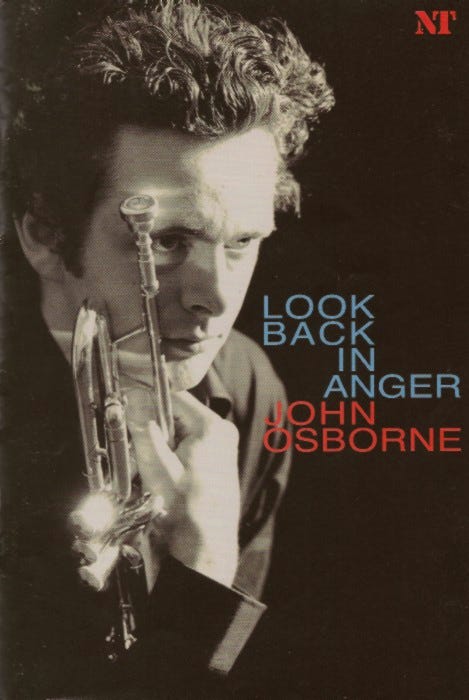
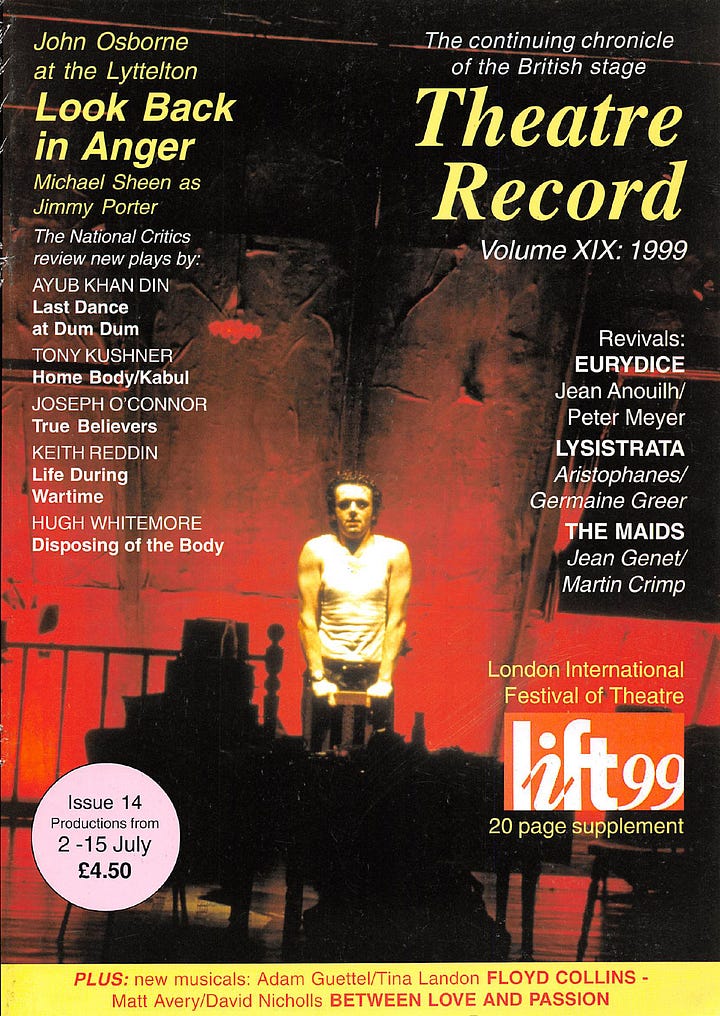
What wasn’t overlooked was again the critics’ praise of Michael’s performance and subtle shift in powering up the women’s roles, showing increased raw emotion. The Daily Mail trumpeted, “Sheen is simply exhilarating in his great jazz riffs of speeches; mercurial and irresistible” and The Independent voiced, “Michael Sheen makes Jimmy sympathetic. In character he roars, rants and whimpers at a thrillingly dangerous level.”
Jason Hughes, Michael and Emma Fielding in the 1999 version of Look Back in Anger at The Royal National Theatre Lyttelton. Photo: Ivan Kyncl
For this staging, the ensemble included Emma Fielding as Alison Porter, Jason Hughes as Cliff Lewis, Matilda Zeigler as Helena Charles and William Gaunt as Colonel Redfern. For A Tennantcy To Act subscribers, Fielding is an important connection: she and David Tennant were classmates and 1991 graduates of The Royal Scottish Academy of Music and Drama. Patricia has more to say on that in her article and in the future.
Emma Fielding and Michael as Alison and Jimmy Porter at The Royal National Theatre Lyttelton, 1999. Photo: Ivan Kyncl
Look Back in Anger ran from 15 July to 11 September 1999. Michael's exceptional performance earned him nominations for two of London's most prestigious theater awards in 2000: the Evening Standard Theatre Award and the illustrious Olivier Award.
Matilda Zeigler as Helena Charles and Michael at The Royal National Theatre Lyttelton, 1999. Photo: Tristram Kenton
As Michael’s performances were pre-Internet, there are no videos available for public viewing. However, the National Theatre does allow in-person visits by appointment only, where you can request archival material from the 1999 staging, including a filmed performance of Look Back in Anger.
Patricia and I joke that there are only 24 actors available in the UK entertainment industry. Before Look Back in Anger, Emma Fielding and Michael participated in the BBC Radio 3 production of Troy in November 1998. Claire Skinner guested in 2021 on the Hear Me Out podcast with Lucy Eaton (yes, that Lucy from Staged) talking about the role of Bridget in Harold Pinter’s Moonlight. Claire and Michael were cast as sister and brother in this play, which premiered in 1993 at London’s Almeida Theatre.
Hear Me Out S1 #1 - Claire Skinner (Full podcast audio)/Lucy Eaton Productions/YouTube
And here is a wonderful interview Michael and Jason Hughes did with The Independent in 2013. Their friendship began when they were teens at the National Youth Theatre of Wales in Cardiff.
David Tennant undertook the Jimmy Porter role three times, twice onstage and once for a BBC Radio production. Thus, our protoDavidologist Patricia will be filling in the spaces connecting David to Look Back in Anger.






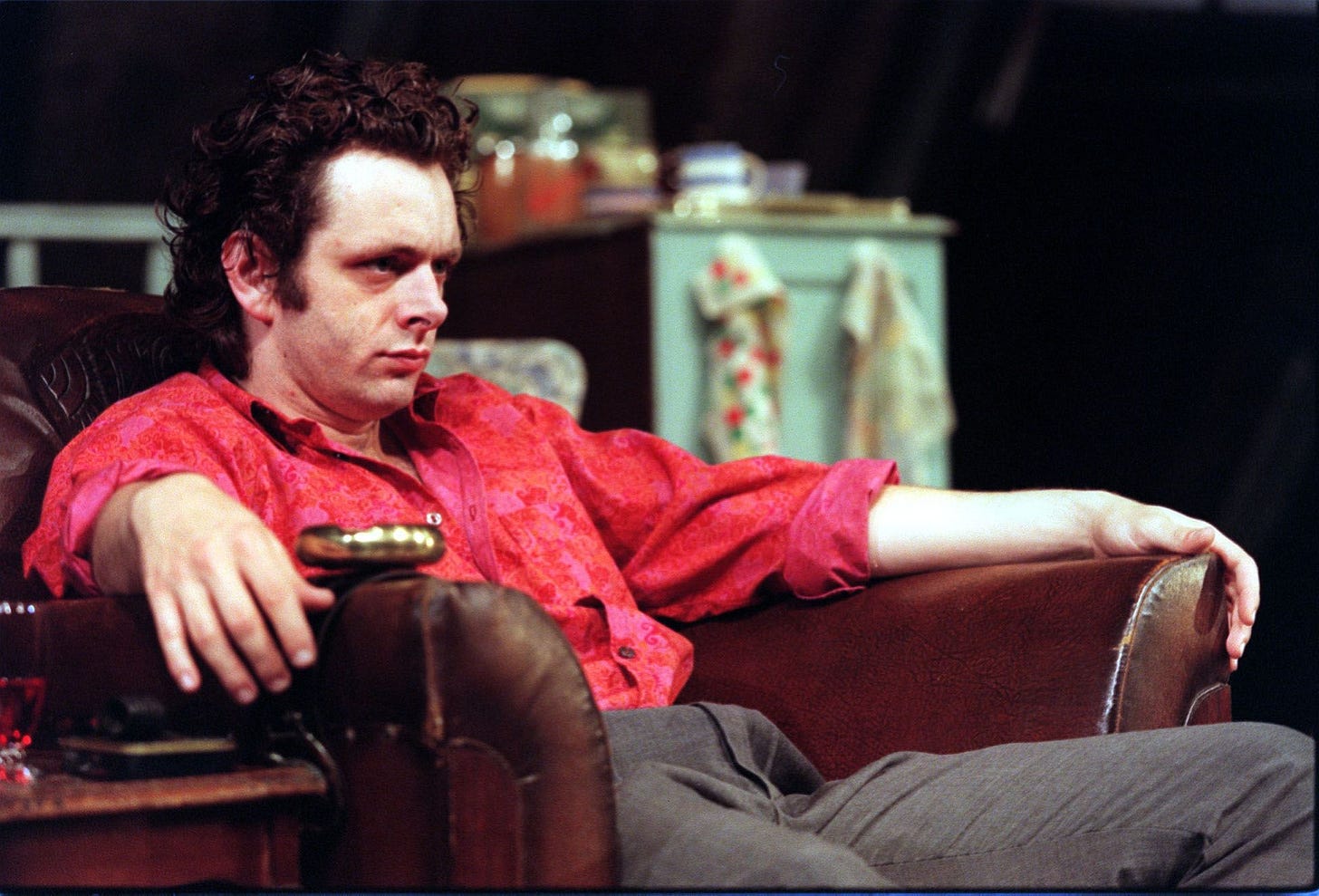

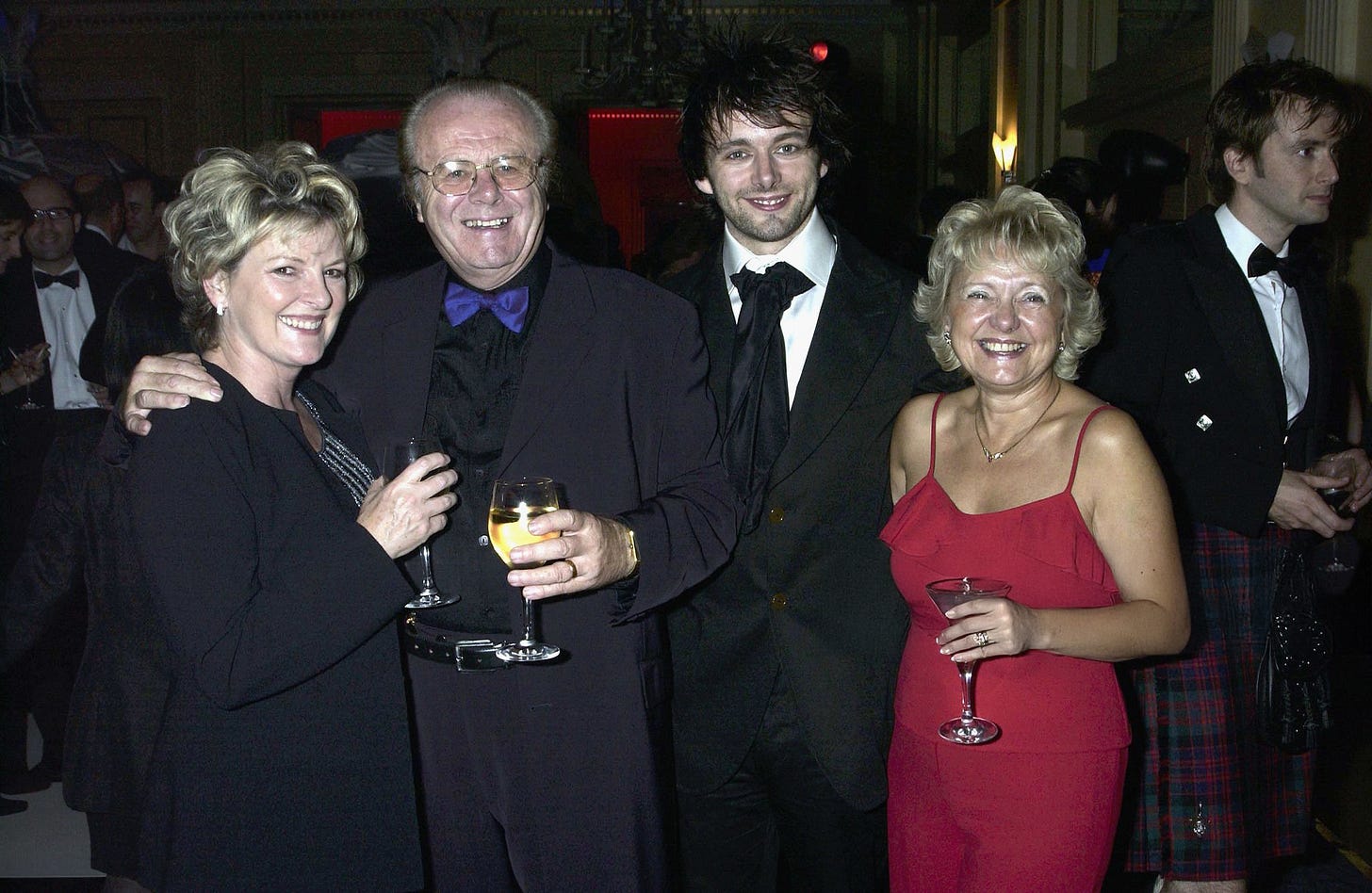
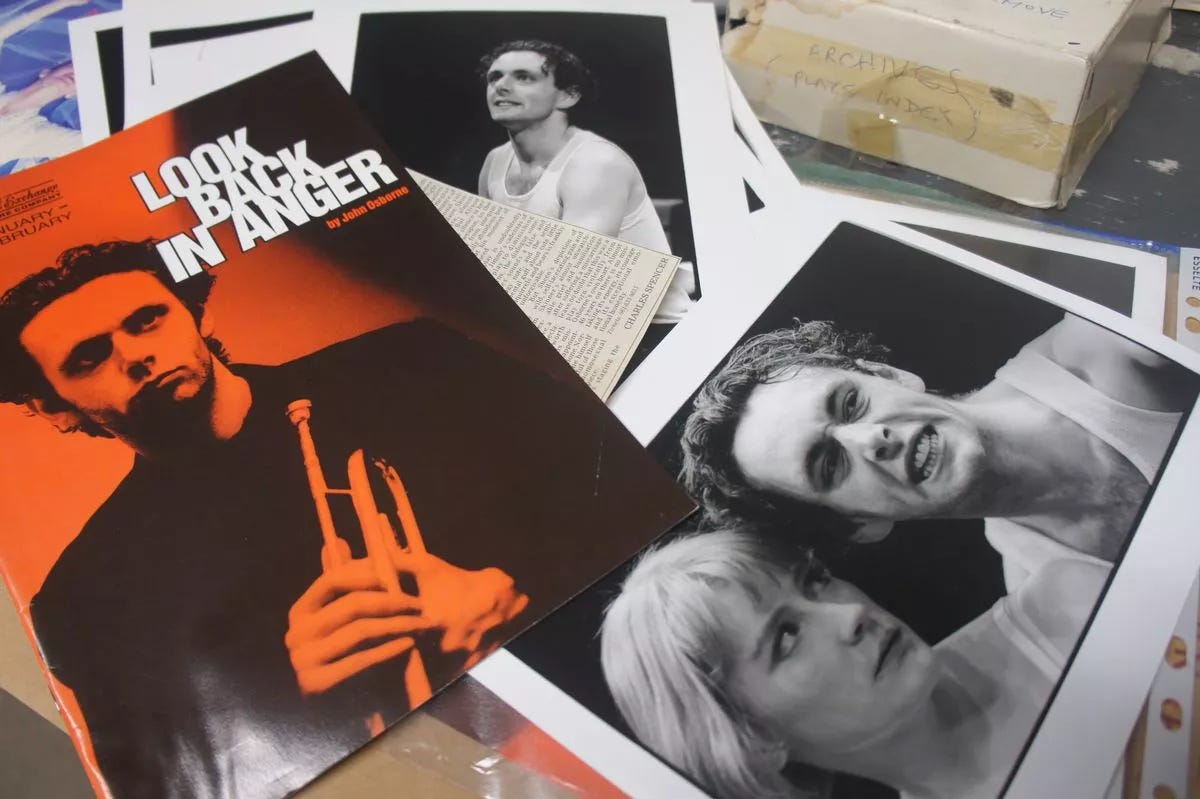
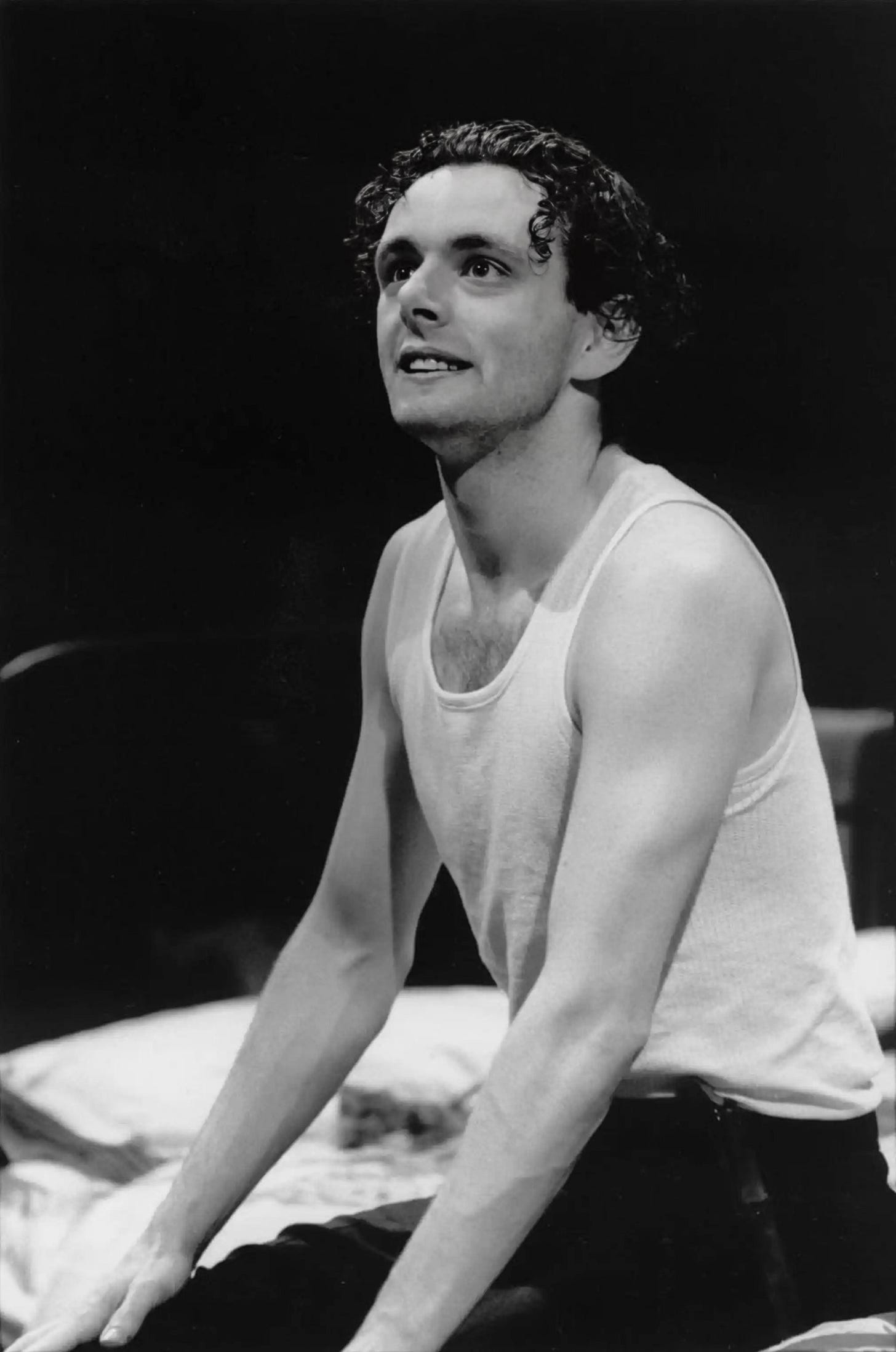

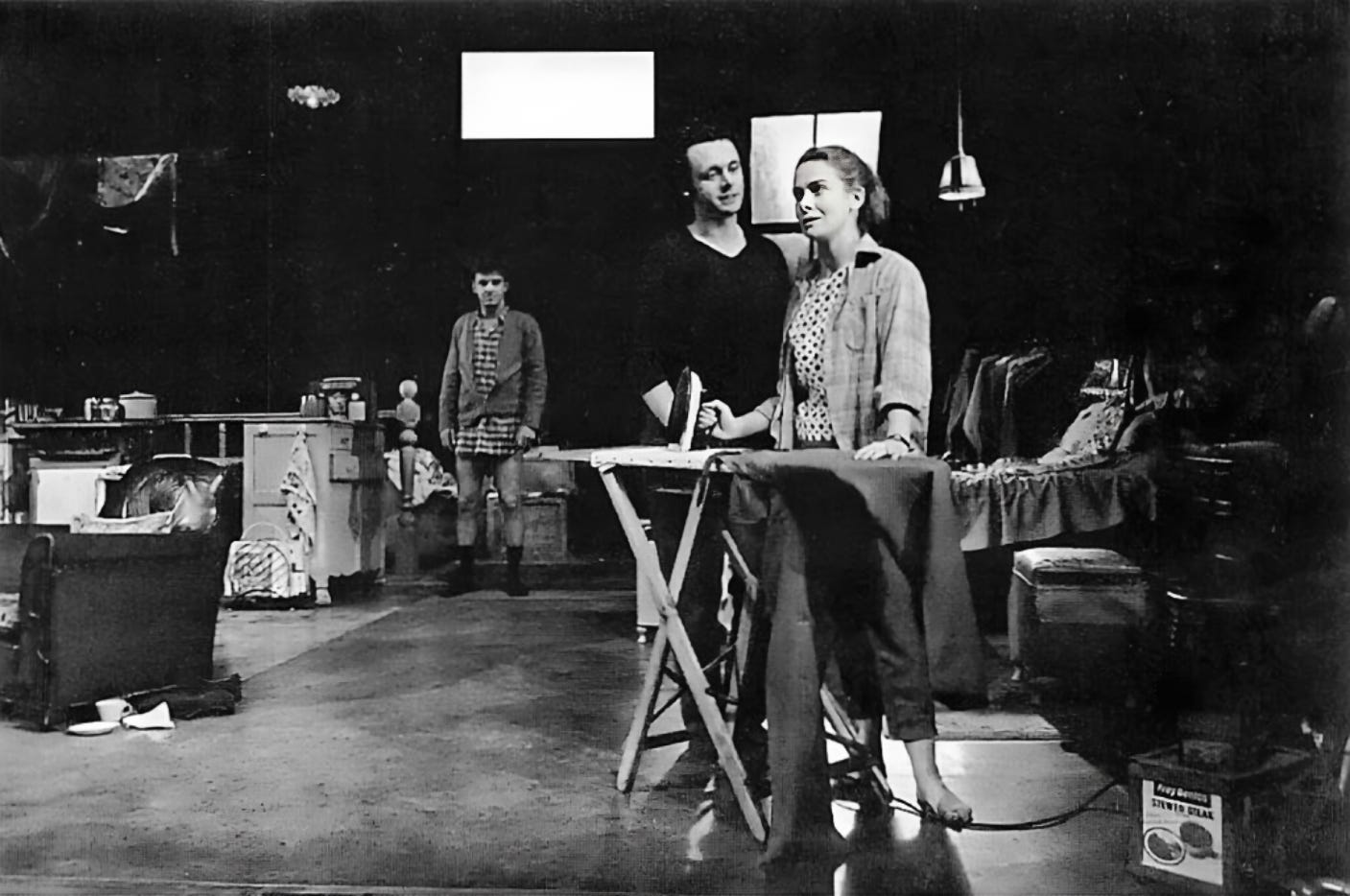
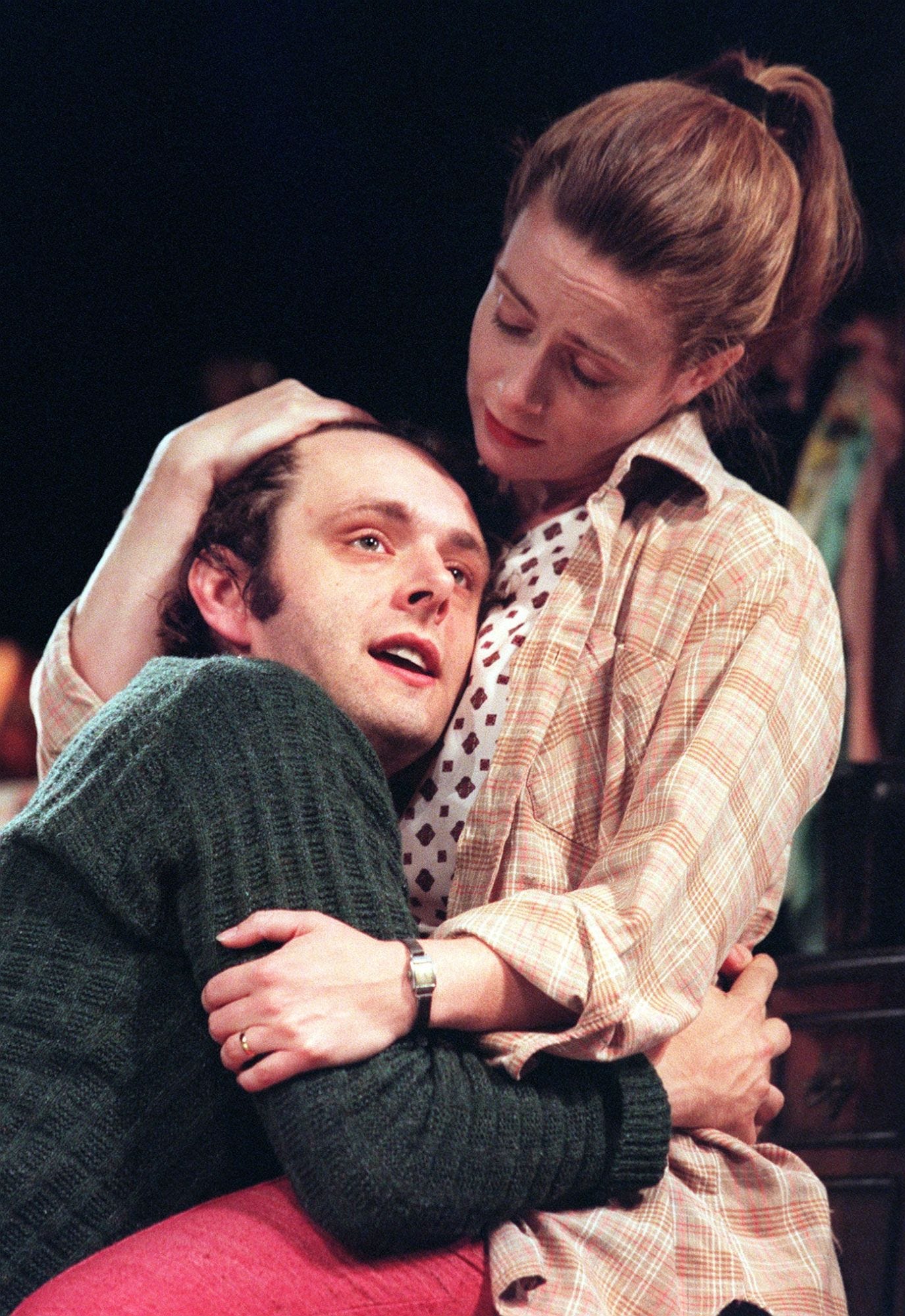


I did want to add that my passage on there being 'only 24 actors' in Britain is an in-joke that became quite noticeable in researching Michael and David's work. Naturally it's quite hard to ignore those tangibles when assessing their overlapping careers, however it is part of what makes these two such a delight in writing about.
Thrilled you are covering Michael Sheen and David Tennant in anything. They are a thrill to watch, individually or together.